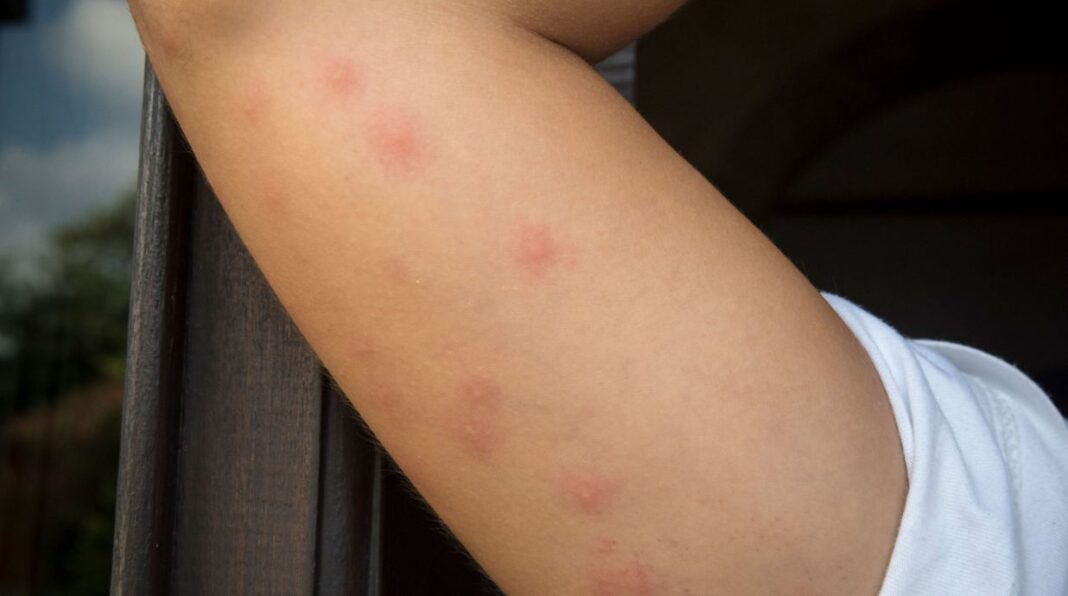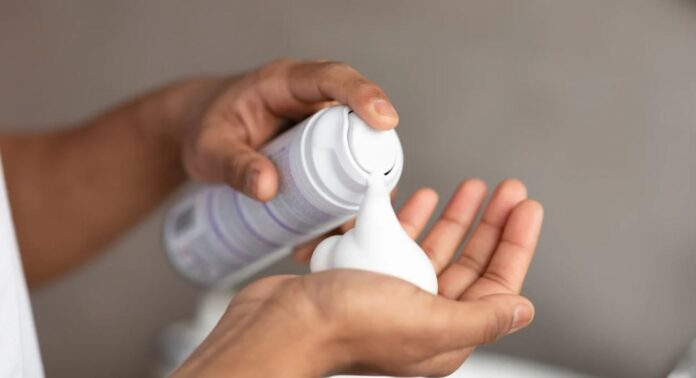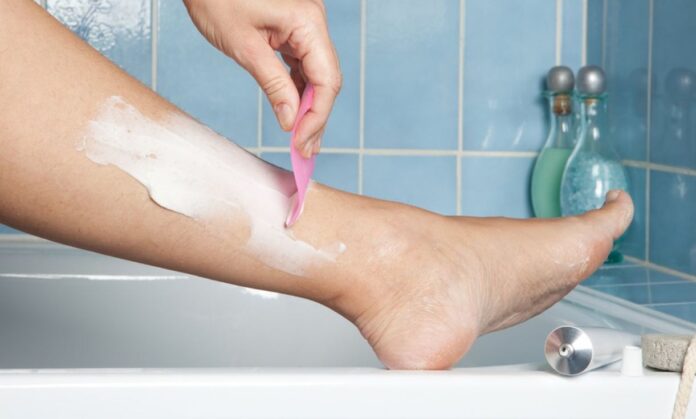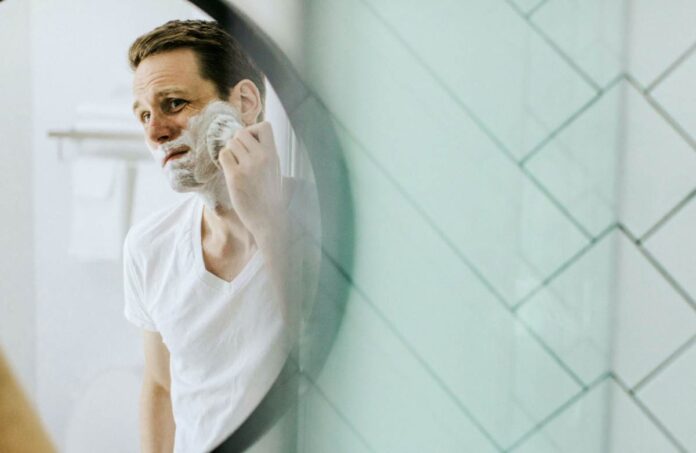If your skin is sensitive, the chances are that you aren’t a suitable candidate for depilatory creams. That’s because, although these products are called creams, they are chemicals capable of breaking down not only the hair shaft but also tender skin. It gets worse if you are violent during the wiping-off stage; you can sustain blisters that will take time to heal.
What you see or call red bumps after using a depilatory cream are rashes or dermatitis resulting from irritation from not-too-favorable chemicals. If you don’t stop it right away, it can lead to a more serious skin problem. The thioglycolic acids and bases, which are the main active ingredients in hair removal creams, can be corrosive and detrimental even with minimal application if you are sensitive-skinned.
Even if your skin isn’t sensitive, another reason you may experience skin irritation or rash after using a depilatory cream is if you leave the cream for more than the recommended timeframe. For instance, if the instructions say that you should leave the cream for 10 minutes, after which you wash off; if you extend it by say five minutes, the consequences can be severe. As mentioned earlier, depilatory creams are essentially chemicals, and you need to adhere to instructions strictly to be safe.
What to Do If You Suffer Irritation From Depilatory Creams
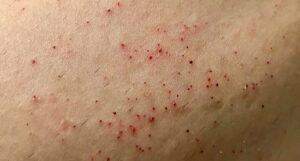 Understanding your skin type and knowing what it tolerates is germane before applying any product to it. If unsure, you can carry out a patch test to see how your skin will react to the product before going all the way. Also, with all products that involve chemicals or electricity, it always pays to stick to the manufacturer’s recommendations for your skin type.
Understanding your skin type and knowing what it tolerates is germane before applying any product to it. If unsure, you can carry out a patch test to see how your skin will react to the product before going all the way. Also, with all products that involve chemicals or electricity, it always pays to stick to the manufacturer’s recommendations for your skin type.
If things get so awry with your hair removal cream, here are some first aid tips that can help keep things under control.
- Rinse with a lot of water. Water is a universal solvent that dilutes most chemicals, thereby reducing their impact. The earlier you do this, the more effective it is likely to be. Also, ensure that the water is cold so it can soothe and reduce swelling.
- Avoid rubbing abrasive objects on the skin. At this stage, you don’t want to disturb the skin balance since you are already battling with bumps, rashes, or dermatitis.
- Moisturize the spot with natural oils or aloe vera to keep it hydrated. This step offers immediate relief and can hasten healing.
- Avoid wearing tight clothes on the body part where you just experienced rashes.
- See your doctor if the irritation continues for more than five hours. There may be something more serious than you think. Besides, they are in the best position to determine whether a hydrocortisone or a pain relief medication may be essential.
3 Alternatives to Depilatory Creams for Sensitive Skins
Thankfully, you have a few options if depilatory creams won’t work. In the next sections, you will see a few alternatives to hair removal creams that can eliminate your unwanted body hair with little or no risk, even if you’re sensitive-skinned.
If properly used, any of these three hair removal methods can replace depilatory creams if you’ve got sensitive skin.
1.Shaving
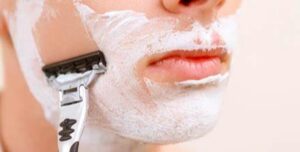 You can shave wet or dry with either a manual or electric razor, and you won’t record any mishaps. Of course, many articles online and perhaps tales have scared many people away from this agelong technique. Nevertheless, it is effective and relatively safe for all skin types.
You can shave wet or dry with either a manual or electric razor, and you won’t record any mishaps. Of course, many articles online and perhaps tales have scared many people away from this agelong technique. Nevertheless, it is effective and relatively safe for all skin types.
Shaving cuts the hair very close to your skin and may keep the unwanted hair off for a week or two. It’s cheap if you only use it once in a while, and you don’t even need a helper or instructor to shave. For people with sensitive skin, using shaving creams can even make the experience more seamless.
The major setbacks of shaving are the risks involved and how the cost can quickly add up in a matter of months. If you are not careful enough, you can cut your skin, get the same bumps you’re running from in depilatory creams, or even contract a disease. But with extra care and excellent shaving habits, you can almost always avoid these risks.
2.Intense Pulsed Light Devices
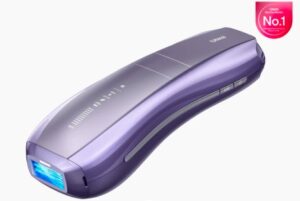 Using light-based technology, IPL devices have come as a lifesaver for people who cannot tolerate drastic hair removal methods like epilating, waxing, or depilatory creams. The tools require that you press a button and flash lights of certain wavelengths into the body area you want hairless and wait for a few days or weeks, depending on the strength of the device.
Using light-based technology, IPL devices have come as a lifesaver for people who cannot tolerate drastic hair removal methods like epilating, waxing, or depilatory creams. The tools require that you press a button and flash lights of certain wavelengths into the body area you want hairless and wait for a few days or weeks, depending on the strength of the device.
The IPL market is awash with many options, and you may find it challenging to decide which is best for your sensitive skin. That’s why relying on experts’ recommendations such as ours can be very helpful. As things stand today, no IPL device matches the newly-released Ulike Air 10. It’s an industry-leading gadget for two reasons. First, it has two light sources, which no other IPL device has, and second, its maximum energy output of 26 joules is second to none.
However, those two reasons alone do not qualify it as safe for sensitive skin. The ultra-cooling technology, which is unique to this brand, makes it nearly painless for even the most sensitive skin. During treatment, this technology cools the skin and the device, ensuring that there are no irritations as much as possible.
The risks of IPL are negligible compared to other removal options. You don’t get nicked or suffer bumps and rashes like you would with waxing or even careless shaving. However, if you are impatient and want an immediate result, IPL is not for you. The least you can wait to see a significant result is between one and two weeks, and that is if you use premium devices like the Ulike Air 10.
3.Electrolysis
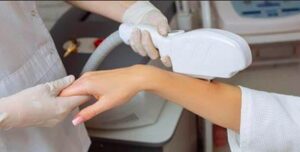 If the hair in question is in a place you don’t want it to be, a more permanent hair removal method like electrolysis can be what you need. As per FDA standards, no other removal method guarantees a permanent result than electrolysis. And as you may already guess from the name, it involves using weak electric currents to destroy the hair follicles from where hair grows.
If the hair in question is in a place you don’t want it to be, a more permanent hair removal method like electrolysis can be what you need. As per FDA standards, no other removal method guarantees a permanent result than electrolysis. And as you may already guess from the name, it involves using weak electric currents to destroy the hair follicles from where hair grows.
While very effective and with a permanent outcome, electrolysis is not something you can do by yourself. You need several sessions of treatment time with a certified electrologist to get the task done. As such, besides eating into your time, you should also be prepared to pay something significant before your electrologist frees you.
Conclusion
Skin sensitivity is the number one reason you may experience red bumps after using a hair removal cream. Also, it may just be that you left the cream longer than advised. Whatever be the reason, you should not take the condition lightly, especially if it has lasted for hours. Try seeing a doctor and consider changing your hair removal method.

 By Laura
By Laura
